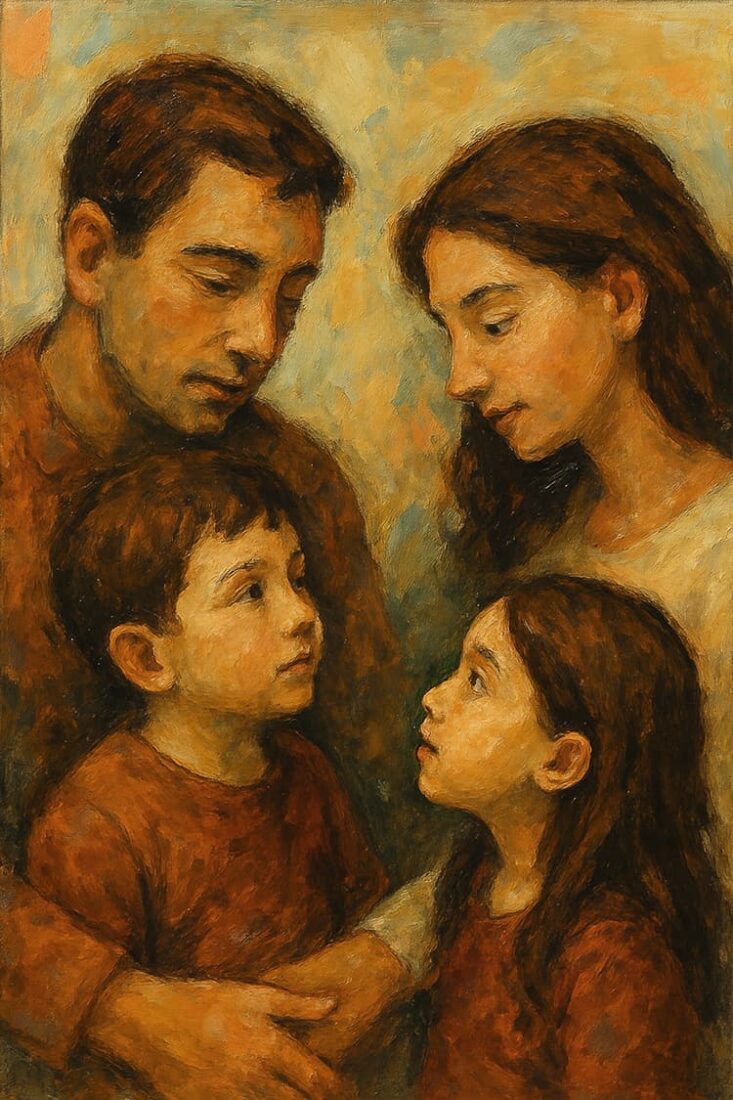Relationships don’t stay still. They evolve with time, shaped by change, distance, closeness, silence, and unexpected turns. Artists have long been drawn to these transitions, using their work to capture the quiet shifts in love, family, friendship, and identity. Whether through painting, sculpture, photography, or performance, creative expression becomes a way to hold onto fleeting emotional truths.
This article explores how visual and emotional storytelling in art reveals the fragile nature of relationships. It also looks at why these themes matter not just to artists, but to anyone navigating personal bonds that change with time.
The Language of Change in Art
When artists focus on relationships, they’re rarely painting a perfect moment. More often, they depict what lingers after a conversation, or what’s left unsaid. Changes in posture, eye contact, physical space between people in an image can say as much as words. A shift in color palette, tone, or composition can reveal emotional distance or closeness.
Some works show the slow fading of connection. Others show reunion, resilience, or the weight of history between people. These pieces invite us to think not just about who we are to others, but how that definition shifts across decades, life events, or even daily moments.
This approach reflects the psychological depth of human connection. Artists are not simply observers – they’re interpreters. And many use their own evolving relationships as source material. By doing this, they give space to feelings that are hard to name but easy to recognize.
To understand more about how artists use metaphor and emotional depth in visual expression, you can explore the concept of symbolism here.
Family and the Tension Between Closeness and Distance
Family bonds are often the first and deepest relationships people experience. But they’re also the ones most likely to be tested over time. As people grow, move away, take on new roles, or experience loss, the dynamic between family members can shift in unpredictable ways.
Artists frequently explore these themes through images of domestic life, fragmented objects, or layered personal archives. A faded photograph, a repeated childhood object, or even an empty chair can carry emotional weight when placed in a creative context. These details remind viewers how relationships linger long after the people in them have changed.
This attention to everyday symbolism helps normalize the idea that closeness isn’t constant. The reality of growing apart and coming back together again is a cycle that’s not always dramatic, but still deeply emotional.
For people actively building or expanding families, this understanding is particularly relevant. It helps contextualize not only the relationships they have but the ones they’re hoping to create. For those seeking support, finding a fertility clinic near me is often part of this broader emotional journey.
Objects, Memory, and Emotional Triggers

Art often relies on material things to explore emotional relationships. An object can hold memories, create conflict, or symbolize a lost moment. This use of physical items in visual storytelling mirrors how we relate to belongings in our own lives. Think of the sweater you still keep from someone who’s gone, or the drawing your child made that you can’t throw away.
Installations and mixed media often use these ideas to make viewers reflect. Artists might incorporate broken dishes, worn clothing, or found family letters into their pieces. The materials carry their own narratives, and their reuse in art adds new meaning.
This practice connects deeply to how we experience relationships – through memory, association, and the physical residue of shared experience. It also reminds us that time changes how we feel about the same person or moment. What once felt insignificant may later become powerful.
Art offers a safe space for this emotional reassessment. And for artists and viewers alike, revisiting emotional triggers through creative expression can offer healing or insight into unresolved relationships.
Why Artists Keep Returning to These Themes
There’s a reason artists across time and place continue to explore personal connection. Relationships are where our biggest emotions happen – love, loss, disappointment, growth. They’re deeply personal but also universally relatable.
For artists, returning to this theme allows them to engage with questions that don’t have easy answers. How do we hold on to people? How do we let them go? Can closeness be rebuilt? What happens when someone changes, or we change?
These aren’t just personal concerns. In a broader social context, they mirror political and cultural conversations about care, belonging, and responsibility. The family unit may be personal, but it is also cultural – shaped by norms, expectations, and changing definitions. Art becomes a space to question what those relationships mean today.
This is especially relevant as people redefine what family looks like – single-parent households, chosen families, blended or transnational structures. Artists reflect this fluidity and offer new ways to see connection.
Conclusion – Relationships as Ongoing Stories
Art doesn’t freeze relationships in time. It opens them up. Through colors, textures, silence, and contrast, artists explore how love, memory, distance, and care shift as we move through life. These changes might be subtle or dramatic, but they’re always present.
By turning those shifts into something visual, artists create moments where we can reflect on our own emotional landscapes. We see ourselves and the people close to us differently. We recognize the beauty and difficulty in change.
Relationships aren’t static, and neither is the art that tells their story. Whether through the lens of family, memory, or longing, creativity continues to make space for questions we’re still learning how to ask.
